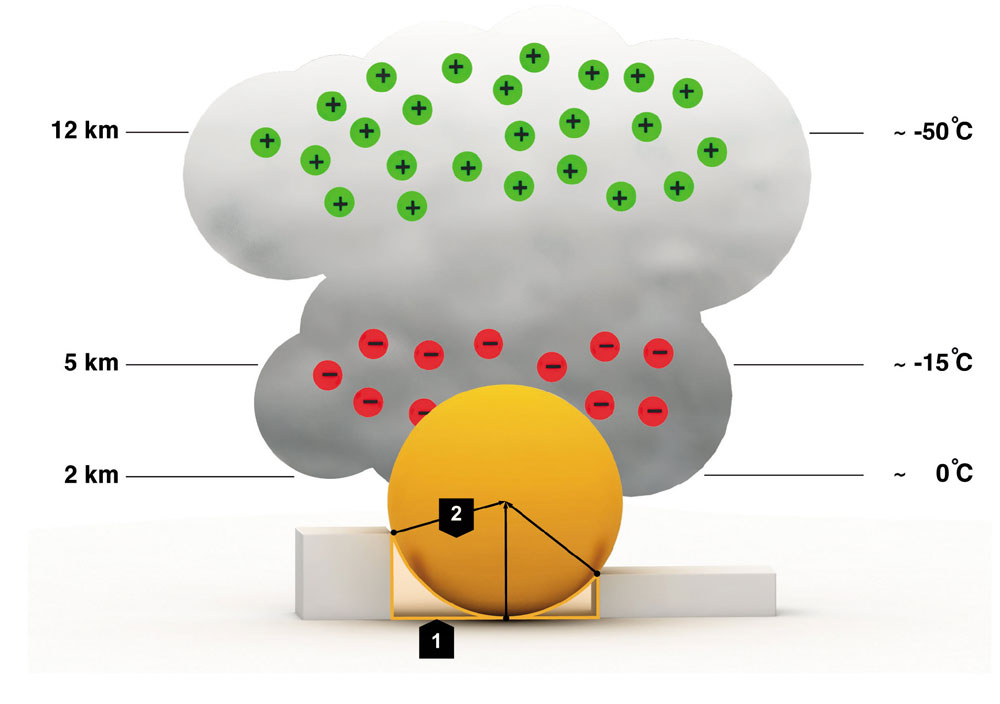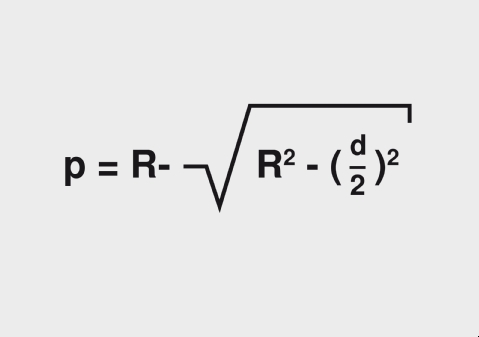Rolling sphere method for the planning of air-termination systems
Physically founded method for complex systems
Various methods can be used to plan air-termination systems as part of the external lightning protection system. One method which has proven its worth in many cases is the so-called rolling sphere method. It is particularly suitable as a planning method for complex systems. In contrast to the protection angle or grid method, the rolling sphere method is derived from the electro-geometric lightning model and has a basis in physics. This is, therefore, the method that should be used where the protective angle or grid method throw up uncertainties.
The basis for the calculation of the air-termination system is the rolling sphere radius, because, in this method, a lightning sphere rolls digitally over the building to be protected. Every point at which it makes contact is a possible impact point for the lightning.
Striking distance and stepped leader tip

Charge separation causes a potential difference between the clouds and the ground, producing a stepped leader with a stepped leader tip. From various points, such as trees, houses and antennas, connecting discharges are launched towards this tip of the stepped leader. The object from which the connecting discharge first reaches the tip of the stepped leader is the point where a strike occurs. It is therefore necessary to protect all points on the surface of the lightning sphere with the radius of the striking distance, and with the tip of the stepped leader as its centre, against a direct lightning strike. The radius of the rolling sphere depends on the lightning protection class of the buildings that are to be protected.
Air-termination systems as protection areas
The lightning current must be intercepted and arrested by the lightning protection system. In case of a direct strike, the lightning protection system also protects the building against fire. The air-termination systems provide an optimal impact point and are connected to the earthing system via the conductors. For lightning currents, this creates a conductive path into the ground. One can regard air-termination systems as protection areas. These protection areas are determined using the rolling sphere method.
The rolling sphere method allows the correct dimensioning of the required lengths of the air-termination rods and the distance between the air-termination rods. These should be arranged in such a way that all the parts of the system to be protected are located in the protection area of the air-termination system. Accordingly, the building to be protected must be equipped with air-termination systems in such a way that a sphere with the spherical radius stated in the lightning protection classes cannot touch the building.
The electro-geometric lightning model as a physically recognised model
The rolling sphere radius, together with the minimum current peak values relative to the appropriate lightning protection class, forms the electro-geometric model (EGM), which is the only physically recognised basic model for the creation of a lightning protection concept according to VDE 0185-305-1 (IEC/EN 62305-1).

Using CAD programs, the lightning sphere can be rolled in a three-dimensional space over the entire system to be protected. Thus, for example, for buildings of lightning protection Class I, surfaces and points are touched by the sphere, which are still in the protected area for buildings of lightning protection Class II, III or IV. The rolling sphere method allows the installation to be protected to be divided into different external lightning protection zones (LPZs):
LPZ 0A: Hazards from direct lightning strikes and the entire electromagnetic field of the lightning
LPZ0B: Protected against direct lightning strikes, but at risk from the entire electric field of the lightning
Calculation of the penetration depth

If several lightning rods are used to protect an object, the penetration depth between them must be taken into consideration. The following formula can be used for exact calculation:


